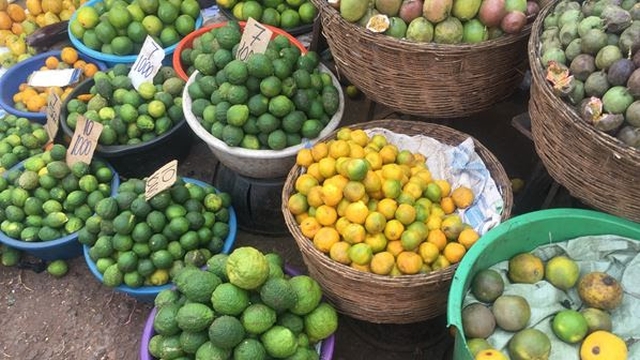
Stewarding knowledge on African food systems – beyond collecting statistics
When African policy makers talk about food systems, they are often only interested in estimating national requirements of maize, wheat and other few commodities considered more strategic. Although it is known that everybody needs a good stew, there is no policy interest in understanding the demand for potatoes, tomatoes, pulses, meat and other commodities that are often consumed with so-called staples. Commodities whose statistics are not collected are a huge source of income for the majority of smallholder farmers. For instance, farmers who produce and sell tomatoes, tubers and many other orphaned foods earn income that enables continuous production.
Connecting national census with food systems
Very few African countries connect their national census with food and nutrition security. For instance, Zimbabwe has just announced new results from the national census indicating that the total population is now 15.3 million. In addition to the main limitation that the national census is just a string of naked figures, policy makers have not shown interest to know the basic food basket for each of the households comprising 15.3 million Zimbabweans. A national census should not only be conducted for political purposes like setting new constituencies.
Assuming the census survey asks the right questions, it will be very informative to go beyond just collecting statistics in terms of numbers of people in a village or community but go on to assess the average monthly food basket comprising grains, leafy vegetables and fruits for a family of five or six. That level of analysis for each household will enable policy makers to estimate the national demand capacity for various commodities such as horticulture, field crops, small grains, indigenous chickens, fruits, tubers and others.
Importance of matching food production with population growth rate
Failure to creatively interpret census data and convert it into usable knowledge makes it difficult for most African countries to know the demand capacity for local foods at local and national level. In the case of Zimbabwe, a big portion of the 15.3 million population constitutes the demand side for diverse food commodities. While that demand cannot be expanded, the country has seen more players getting into producing the same food commodities for the same population over the past few years. What happens if a lot of capital is injected to produce the same commodities for the same people? How do policy makers relate the growth rate in population (demand side) and growth rate in food production (supply side)?
If the population growth rate has been 10% over the past five years but food production has increased by 100%, what are the implications of a 90% increase in food production against a population that has only grown by 10%? This scenario has obviously exerted downward pressure on the demand for food and prices for commodities. Consequences of the supply side increasing disproportionately to the demand side have been dire as shown by more commodities chasing stagnant demand. If at one point, a household of three people was consuming 12kg of maize meal (4kg per individual adult) and that number goes up to 4 people/consumers, it is only 25% increase in demand for maize meal.
Assuming these people receive 30kg of mealie meal, each will get more than 7kg, which is more than 300% increase. However, since there is a limit to which this household can consume quantities of mealie meal, this household probably needed 16kg to cater for an extra household member. But if 30kg is now available due to continuous food production, what will happen to the excess 15kg?
Decreasing return on investment in agriculture
Another key factor is the constant income level of this household against increasing supply which means food suppliers like farmers will be forced to reduce prices in order to push more volumes – like forcing people to eat. This is what has typically become part of the Zimbabwean food landscape where increasing food production disproportionate to consumer incomes has worsened the situation. For example, where an income of USD100 was buying 20 boxes of tomatoes, that translated to USD5/box but when the same USD100 is now being forced to purchase 50 boxes, that translates to USD2/box. When incomes are losing value, the implications are that less income leads to less buying power or demand for any given quantity supplied. This also leads to less valuation of food commodities and less return on investing in the agricultural sector.
The long-term effect is a shrinking agricultural sector. While income classes have been made up of the extremely poor majority earning below USD200 a year and the other classes earning above USD200, the production side has comprised diverse classes of producers such as smallholder farmers, medium scale farmers, peri-urban farmers, large farmers and even large estates. All these targeting 90% of the low-income consumers who earn less than USD200 annually. How does anyone expect return on investing in any agricultural commodity when every producer is targeting poor consumers with no buying power?
On the other hand, donor-funded agricultural projects, contractors and estates continue to compete with smallholder farmers trying to eke a living from agriculture. Critical questions to be addressed at policy level include who should produce for the low income and which type of commodities should be produced for better return on investing in agriculture? The market has defined the commodities such as basics like leafy vegetables, onions, cabbages and others. But the same land that was producing for the local market, export and local industry is now being used to produce even more quantities of fewer value chains comprising basics for the local market. Land and resources that were used to produce coffee for export are now used to produce cabbages, green mealies, sugar beans and wheat. Irrigation schemes are also competing with dryland farmers in producing the same commodities for the same consumers.
Value of closing the evidence gap
Lack of investment in understanding local demand for food is a key gap in African food systems. What prevents African countries from using the national census to understand households and their demand capacity? While value addition is often touted as a solution, it may not be a solution unless demand is fully understood. Data and evidence can show the folly of promoting value addition when fresh food is available for the same consumers all year round. Value addition may be important where countries try to repurpose land and resources for substituting imports. This can start by finding out which commodities are imported at one time? If they are not imported but are necessities whose prices will go beyond the reach of the majority if production or processing is left to a few players, value addition can be a good solution. A good example is cooking oil which most African countries always import because it has few processors. The price of cooking oil can go beyond the reach of the majority although the people are forced to buy it because it is a necessity.
A fundamental question for African policy makers is how can we repurpose our land and resources to ensure production, processing and marketing of cooking oil is in the hands of the majority because it is a necessity? If the majority of smallholders are involved in sunflower production, the next stage should see many SMEs being afforded appropriate technology to process sunflower into cooking. This should not be done by NGOs or big companies in cities far from production zones. If properly done, this can be a good avenue for developing rural industries.
Currently, farmers are producing soya beans but farming communities buy back cooking oil at 10 times the value. Policy makers should enable building local industries for such necessities which can build local economies by ensuring money continues to circulate in the local ecosystem. While wheat is promoted everywhere, it gets into the hands of few processors who manipulate the processes. What prevents African governments from establishing programs for youths to operate small bakeries in wheat production areas?
The power of African mass food markets
In addition to using the census to estimate the size of food demand, African mass markets can be a powerful vehicle for increasing the accuracy of demand estimates. There is no reason why African governments should not invest in capturing data on volumes and prices in mass markets as well as different food production locations. This can also provide an indication of the extent to which return on investment is being obtained in agriculture for different commodities. Unfortunately, this kind of analysis is missing at policy level. For example, ministries of agriculture have no clue what has happened to horticulture in terms of production, consumption, sales, costs and profits for different value chains over the past year or two years. Such details are very important for various ministries responsible for agriculture, industry, finance, trade and others.
A culture of collecting data along value chains benefits all these ministries. It is not about statistics as naked figures. There is need for experts in particular value chains who can interpret analysed data, not just provide production figures or statistics. Such experts should be guided by questions such as why should this data be analyzed and for who? If information on youth farmers and markets is collected, who needs that information and why? If there is interest in women participation in markets and particular commodities, who need to know this information and why? Who would be interested in losses associated with different transport services for various commodities?
Answering these questions through data collection and interpretation is a fundamental knowledge management step. Unfortunately, due to the absence of a data collection and interpretation culture, in most African countries, agriculture is an uncoordinated sport where everybody has a different starting point. All actors just collide in the market and lack of coordination means there is no offside, yellow card or red card in the food production game. That is why the sector is being taken advantage of by several actors. For instance, those with access to free inputs are competing with those without inputs. Many actors are doing their own farming quietly and are only recognized by the market when they bring their commodities for sale. Policy making is too disjointed and no one is informing farmers who only discover the reality upon arriving at the market.
Need for grounded systems to understand food systems
Unless African countries get onto the ground and set up solid systems, they will not fully understand dynamics of their food systems. A fluid data collection system is critical for broadening opportunities. It’s not just about collecting statistics but building the capacity of institutions like extension agencies to analyse, interpret and make sense of why things are what they are. Using data to answer the WHY question is more important than just collecting statistics. Political will can be stepped up through evidence. Food systems should not just be promoted for purposes of consumption but also creating livelihood opportunities like enabling communities to broaden their livelihood choices. Very few African countries have an extension office at markets with officers working there daily. More so, there are no knowledge sharing pathways between ministries of local government that are responsible for urban markets and ministries of agriculture responsible for food production. How can agriculture be used to transform African economies in this situation?
Charles Dhewa, CEO, Knowledge Transfer Africa
Email: charles@knowledgetransafrica.com / charles@emkambo.co.zw / info@knowledgetransafrica.com
Website: www.emkambo.co.zw / www.knowledgetransafrica.com
Mobile: 0772 137 717 / 0774 430 309 / 0712 737 430
Article source: eMkambo blog. Reproduced by permission.
Header image source: Author supplied.






